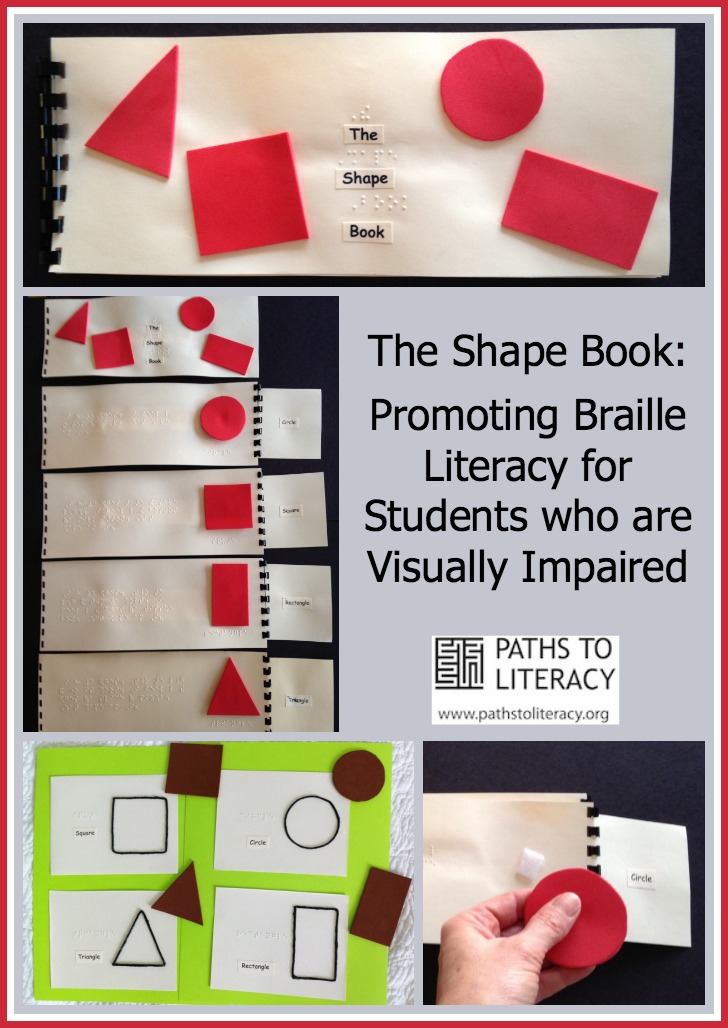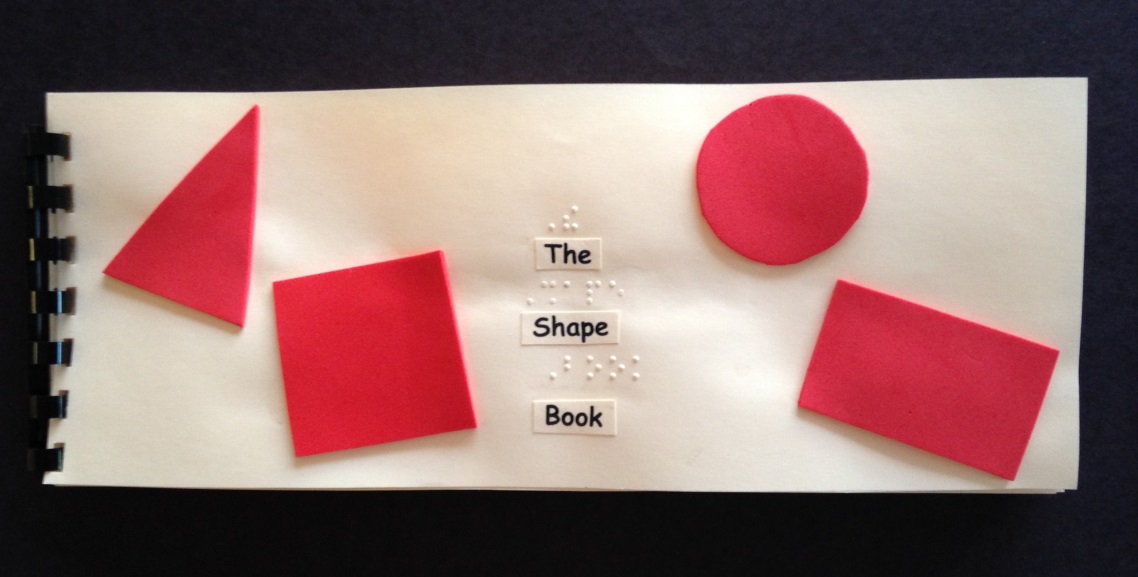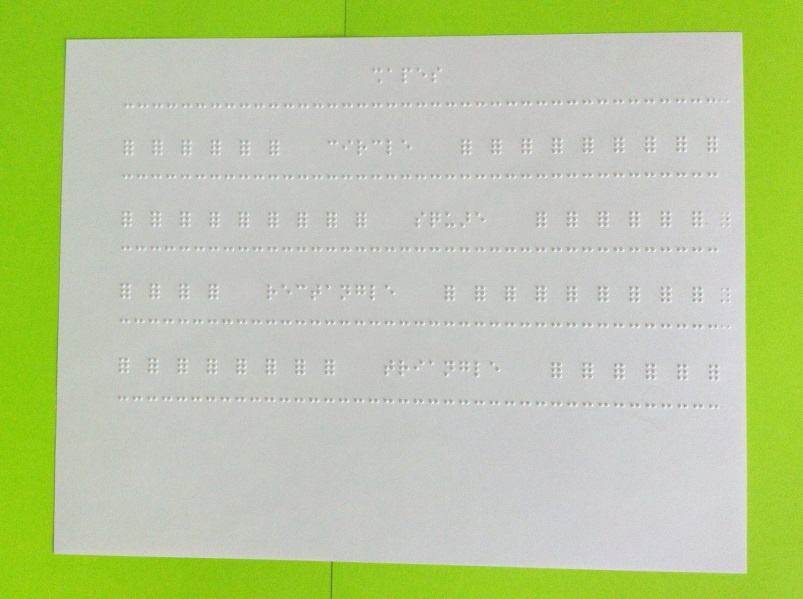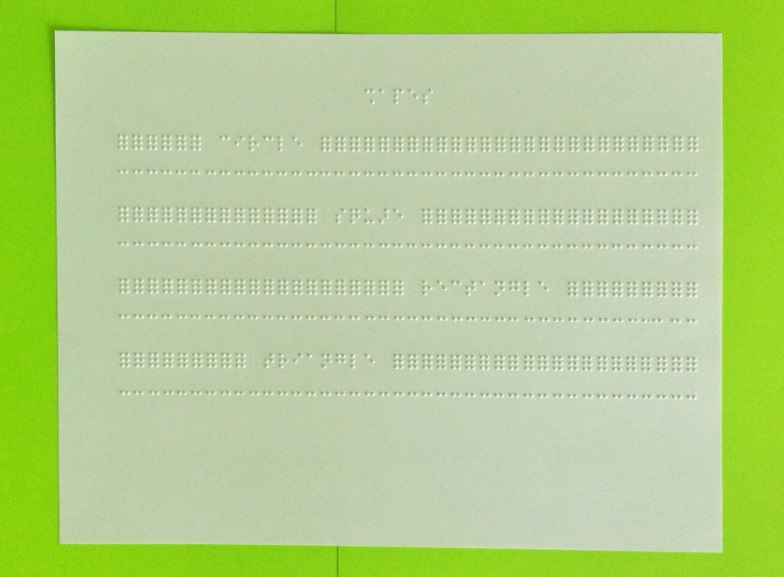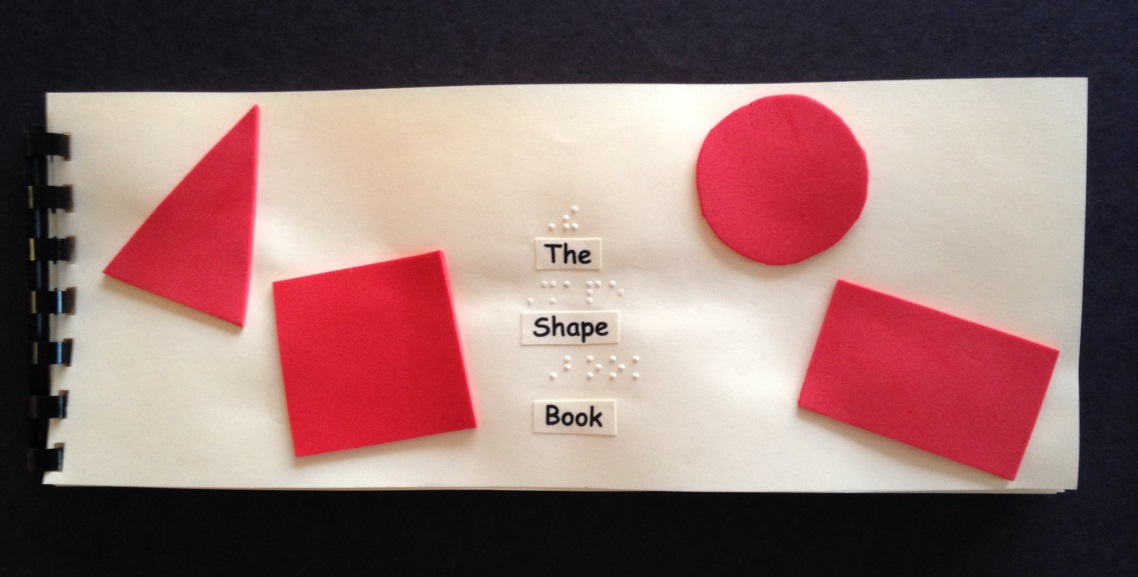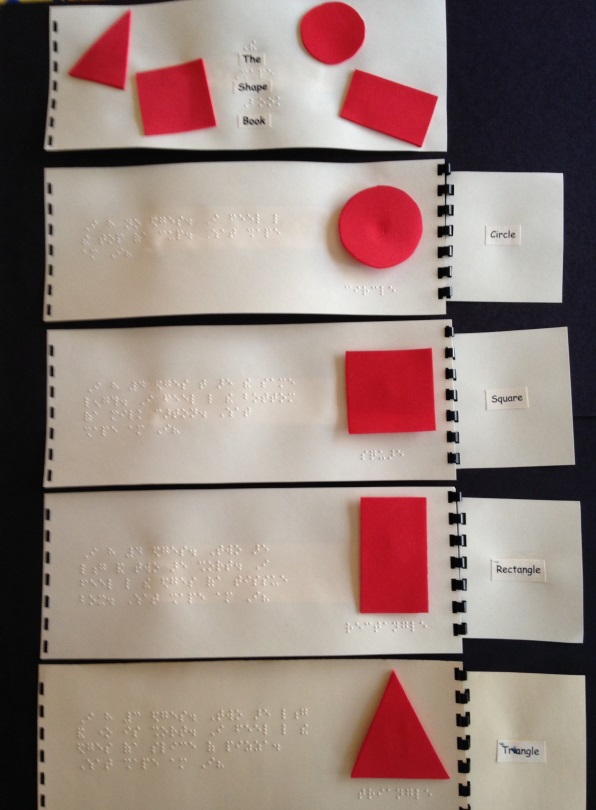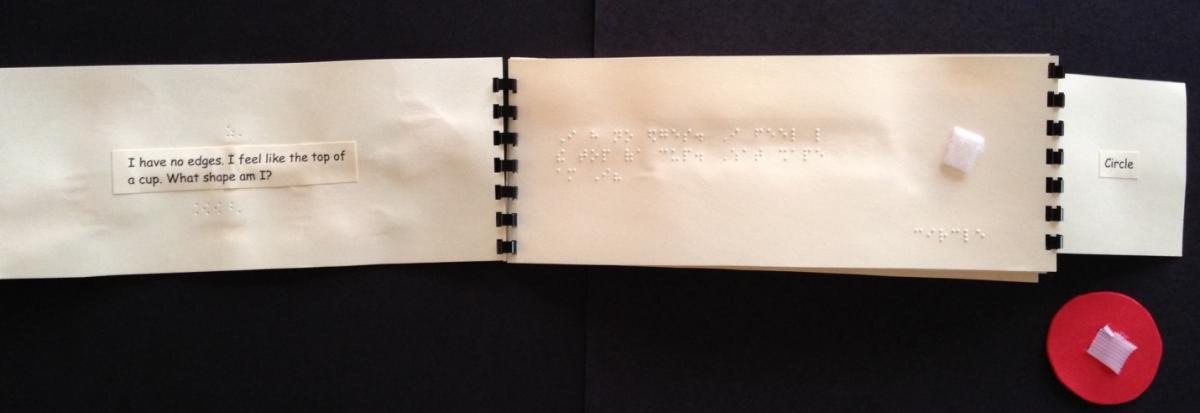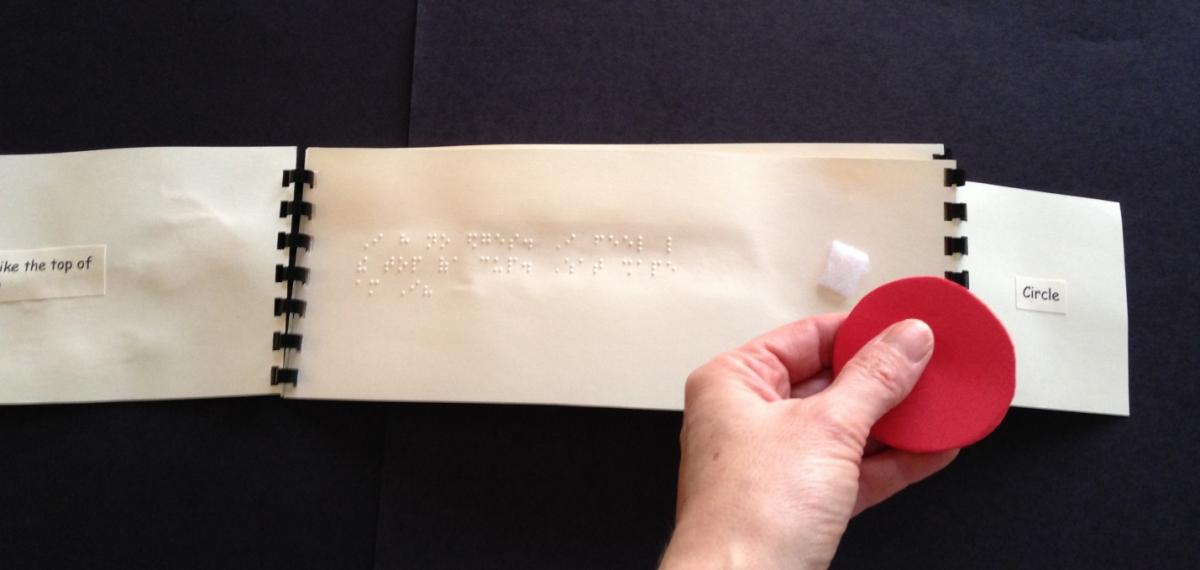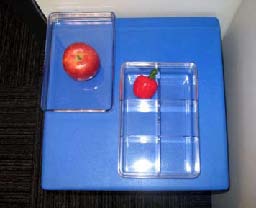Using the “Beginning with Braille” book by Anna Swenson, I selected three strategies for promoting braille literacy: flash cards, a book and worksheets. See attached.
Materials
- Foam sheets
- Braille paper
- Braille writer
- Glue
- Velco
- Book binder strip
Procedure
The shapes on the cover in addition to the brailled title will help the student discriminate its location. The student or visual reader reads the book and the student guesses the shape under the flap from the question on each page with a hint or two. The student then verifies the shape by locating it under the flap, taking off the paper and investigates it.
Flash cards: Identify the shape, and then match it with the “Wikki Stick” shape on the card. They feel the brailled word and say the shape name aloud.
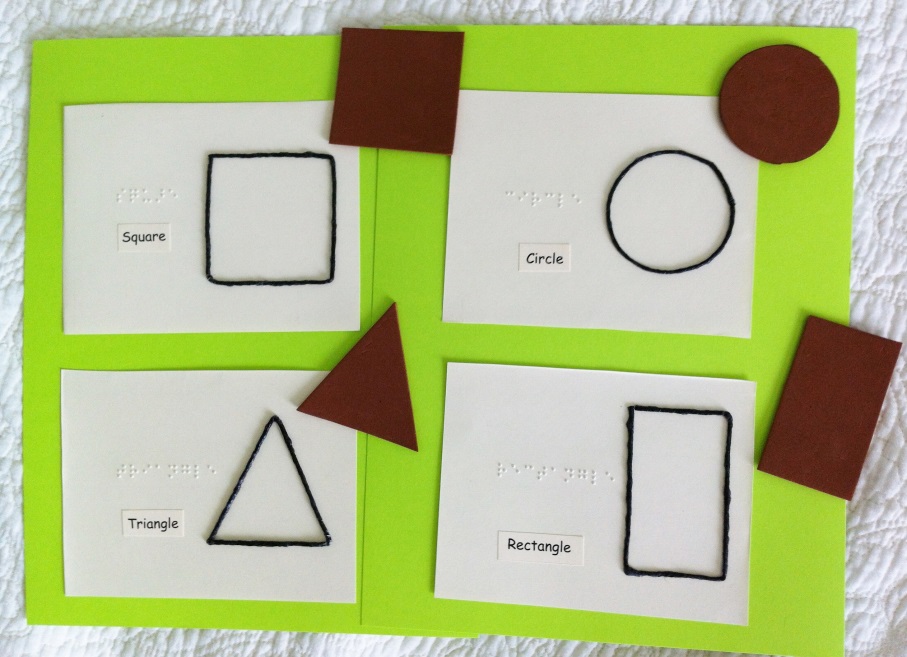
Worksheet #1: Locate then identify the shape word by noticing how it’s different than the full braille cell. With the first letter of each word (“c” for circle) identify that letter then say the word as you feel it. This is a way to connect prior knowledge of letters she knows. Notice the full cells are spread apart and there are 3 spaces before and after the word to make it easier to locate.
Worksheet #2: This worksheet is the same idea as above, locating and identify the shape word, but the full cells are closer together, making her tracking more difficult. Also there is only 1 space before and after the word so she needs to track carefully to locate the word.
Shape Book:
This shape book is a tactile, braille interactive book where the shapes are velcroed on so the student can take them off and inspect their attributes (edges, corners, vertices, etc.).
The cover has foam textured shapes that are 1/8 of an inch thick for a tactile experience.
Each page is brailled with a question about what the shape could be given a clue about its characteristics. When the student opens the flap on the right they can find the shape by touch. It has Velcro on the back so the student can remove it and feel it to determine what it is. She does not know all the words in braille, but the idea is to expose her to more braille words and “shape words” which is what is being taught in the lesson.
The teacher can read the book while the student reads along (and practices tracking) in braille. The student can point out or find the words they know.
Under the shape they can say and feel the shape word.
My experience using the materials with the student:
When I introduced this activity to my student she enjoyed it. She was participatory, following the directions for each with a smile on her face. She could identify the first letter of each shape word, allowing her to be successful in saying the word and feeling proud of her accomplishment. The book was fun as she recognized some of the words like: I, like, a and have. The activity sparked an idea for her to create “I like” books as she can read those two words. “Another way to introduce braille literacy”.
Recommendations for further developing braille literacy instruction:
Although the exercises were positive because the student is motivated by shapes, I realized I should have activated her prior knowledge by reviewing the first letters of each word (c, s, t, and r) to help her get ready for the lesson. She did fine with the letters but hesitated with them at first. Maybe she was nervous because they were not isolated and the words are longer than the ones she knows.
Another idea is to introduce contractions within the shape words and text as she becomes familiar with the book.
The student can then match the shapes inside the book w/ the shapes on the cover stating their name and an attribute.
